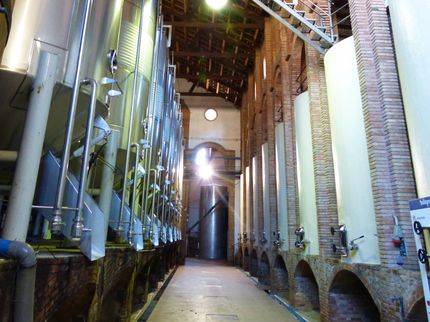Enjoy cocktails without a care in the world
Nationwide monitoring program shows: Compliance with kitchen hygiene is also essential in the production of ice cubes in catering establishments.
Ice cubes or crushed ice are an integral part of the list of ingredients in soft drinks or cocktails. As a foodstuff, ice must be microbiologically safe. Many catering establishments produce it themselves in ice cube makers. The importance of perfect hygiene in the production process is shown by the results of a Germany-wide study.
In 47 out of 244 samples taken from the ice cube machines, the total bacterial count at 36 degrees Celsius was above the limit of 100 colony-forming units per milliliter. Such a value is an indication of hygiene deficiencies and can be associated with the presence of potentially pathogenic bacteria.
Such bacteria were detected in a number of samples. For example, 35 out of 287 samples tested contained coliform bacteria. Enterococci were detectable in 22 of 286 samples. And one out of 288 samples was contaminated with Escherichia coli. Other bacteria detected were Pseudomonas aeruginosa (7 out of 284 samples) and Clostridium perfringens (5 out of 245 samples). According to the Drinking Water Ordinance, such germs must not be detectable in drinking water.
The findings show that the basic principles of kitchen, operational and personal hygiene must be observed even in supposedly simple processes such as the freezing of drinking water and the production of ice cubes and crushed ice. However, the risks of microbial contamination of ice cubes and crushed ice can be reduced to a minimum by regularly cleaning and disinfecting the machines, thoroughly cleaning all equipment and limiting the time the water remains in the machines. Under these conditions, nothing stands in the way of the carefree enjoyment of iced soft drinks in a restaurant or your favorite bar.
The microbiological testing of ice cubes and crushed ice from ice cube makers in the catering industry is a testing program of the Federal Monitoring Plan 2022(BÜp). Ten out of 16 federal states have participated with samples from food monitoring. The BÜp is a one-year plan for the coordinated implementation of official controls between the federal states. Its aim is to obtain nationwide information on compliance with food, wine and tobacco regulations, including protection against deception.
About the Federal Office of Consumer Protection and Food Safety (BVL)
The BVL is an independent higher federal authority within the portfolio of the Federal Ministry of Food and Agriculture(BMEL). It is responsible for the approval of plant protection products, veterinary medicinal products and genetically modified organisms in Germany. In the area of food and feed safety, it assumes comprehensive management tasks and coordinates cooperation between the federal government, the federal states and the European Union at various levels.
Note: This article has been translated using a computer system without human intervention. LUMITOS offers these automatic translations to present a wider range of current news. Since this article has been translated with automatic translation, it is possible that it contains errors in vocabulary, syntax or grammar. The original article in German can be found here.
See the theme worlds for related content
Topic world Food safety
Food safety is at the heart of the food and beverage industry. It ensures that the food we eat every day is not only nutritious, but also free of harmful contaminants. From field to plate, the industry monitors and regulates every step of the process with strict quality controls, advanced testing methods and continuous research.

Topic world Food safety
Food safety is at the heart of the food and beverage industry. It ensures that the food we eat every day is not only nutritious, but also free of harmful contaminants. From field to plate, the industry monitors and regulates every step of the process with strict quality controls, advanced testing methods and continuous research.































































